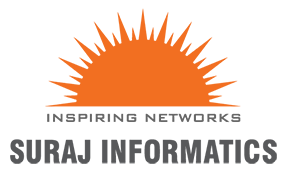Navigating the World with Precision: Exploring Real-Time Location Systems (RTLS)

In today’s fast-paced and interconnected world, the ability to track and manage assets, people, and resources in real time has become a critical factor in various industries. This is where Real-Time Location Systems (RTLS) step in. RTLS is a technology that enables the precise tracking and monitoring of objects and people within a defined area. From healthcare to logistics, manufacturing to retail, RTLS has found applications in a wide range of sectors, revolutionizing the way businesses operate.
Understanding RTLS
Real-Time Location Systems (RTLS) are a set of technologies designed to provide accurate, continuous, and instantaneous information about the location and movement of assets or individuals. Unlike conventional GPS systems that primarily work outdoors and have limitations in accuracy within indoor environments, RTLS solutions are specifically designed to operate seamlessly in both indoor and outdoor settings. They employ a variety of technologies, such as radio frequency identification (RFID), Wi-Fi, Bluetooth, ultrasonic, infrared, and more, to determine the precise location of objects and people.
Components of RTLS
A typical RTLS setup consists of several key components:
- Tags/Devices: These are small, wireless devices that are attached to assets or carried by individuals. These devices emit signals that are picked up by the RTLS infrastructure.
- Readers/Access Points: These are strategically placed sensors or access points that receive signals from the tags and calculate their location.
- Infrastructure: The underlying infrastructure, which could include Wi-Fi access points, RFID readers, antennas, and other hardware, forms the backbone of the RTLS system.
- Software: RTLS software processes the data collected by the infrastructure, calculates the real-time location of assets or individuals, and presents the information through user-friendly interfaces.
- Data Analytics: Many RTLS solutions come with data analytics capabilities, enabling organizations to gain insights from the collected location data and make informed decisions.
Applications of RTLS
The versatility of RTLS has led to its adoption across numerous industries:
- Healthcare: In hospitals, RTLS is used to track medical equipment, patients, and staff. It improves asset utilization, reduces equipment search time, and enhances patient care.
- Logistics and Warehousing: RTLS optimizes inventory management and shipping operations. It tracks goods as they move through the supply chain, reducing errors and increasing efficiency.
- Manufacturing: Manufacturers use RTLS to track work-in-progress items, monitor equipment, and streamline production workflows for increased productivity.
- Retail: Retailers utilize RTLS for inventory management, enhancing customer experiences with location-based offers, and managing foot traffic within stores.
- Sports and Entertainment: RTLS enhances the spectator experience by providing real-time player or performer tracking and interactive experiences.
- Security and Personnel Tracking: RTLS assists in tracking employees in large facilities, enhancing security measures and optimizing emergency response protocols.
Benefits of RTLS
The adoption of RTLS brings forth several advantages:
- Precision: RTLS offers high accuracy, often down to centimeter-level precision, enabling detailed location insights.
- Real-Time Monitoring: The ability to monitor assets or people in real-time facilitates quick decision-making and response to dynamic situations.
- Efficiency: RTLS optimizes resource allocation, reduces search times, and minimizes manual tracking efforts.
- Improved Safety: In hazardous environments, RTLS enhances safety by tracking personnel and ensuring they stay out of danger zones.
- Data-Driven Insights: The data collected by RTLS can be analyzed to identify patterns, optimize workflows, and improve operational efficiency.
Challenges and Considerations
While RTLS offers numerous benefits, there are challenges to consider, such as initial setup costs, maintenance, and potential privacy concerns. Organizations must also choose the appropriate technology for their specific use case and environment.
Conclusion
Real-Time Location Systems (RTLS) have transformed the way industries manage assets, people, and resources. With the ability to provide accurate and instantaneous location data, RTLS enhances efficiency, improves safety, and drives data-driven decision-making across sectors as diverse as healthcare, logistics, manufacturing, and retail. As technology continues to evolve, RTLS is poised to play an even more significant role in shaping the future of various industries, offering new opportunities for innovation and improvement.
